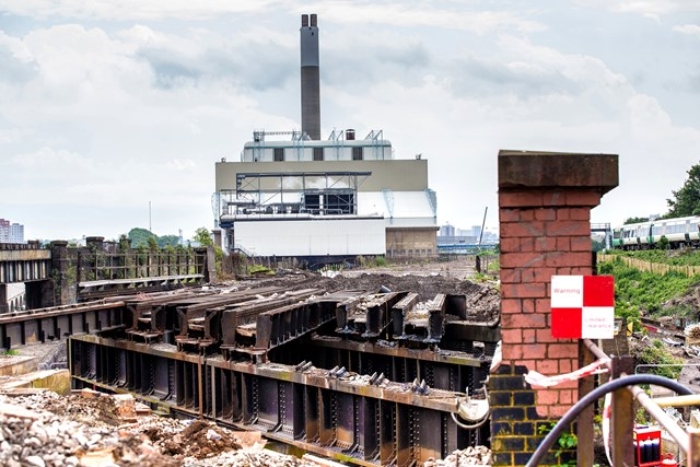Demolition has begun at the site of one of the £6.5bn Thameslink Programme’s most crucial improvements.
The massive Bermondsey Dive Under is being created to separate flows of trains approaching London Bridge from South East London, Croydon and Kent, improving reliability and reducing delays.
In order to create the dive under – the opposite of a motorway flyover – several stretches of old viaduct and bridges are being demolished.
In the shadow of Millwall’s New Den, the site of the dive under was once a tangle of railways and roads. Project manager Greg Thornett said: “Our Victorian ancestors did a fantastic job and we are still using much of their work to carry more than 200,000 passengers every day – including a stretch of the oldest railway in the whole of London. However, this is a once-in-a-lifetime opportunity for us to untangle the current complex track layout, which is a result of historic railway operators dating back over 150 years running services adjacent to one another into London on their own infrastructure.
“Our contractors are removing the steel bridges first before using a mixture of techniques to deconstruct the brick viaducts. Passengers will soon see big changes from the windows of their trains.”
The Government-sponsored £6.5bn Thameslink Programme is rebuilding much of the railway from New Cross Gate through London Bridge and on to Blackfriars and St Pancras. The Bermondsey Dive Under will see two Victorian viaducts partially-demolished and rebuilt to allow Charing Cross trains from South East London and Kent to dive down to almost street level, under a new route carrying Thameslink services from Croydon, and back up again.
In addition the same team, from Network Rail and contractor Skanska, are strengthening 20 bridges between New Cross and Waterloo East to carry the proposed Thameslink track alignments which are necessary to provide 24 train paths per hour though London’s central core from Blackfriars to St.Pancras.
Greg Thornett added: “Although the old viaducts will be replaced by modern structures, they are designed to remain in keeping with the older architecture. It’s exciting to see this transformation and it will be a real sense of achievement to see trains running on it.”

















